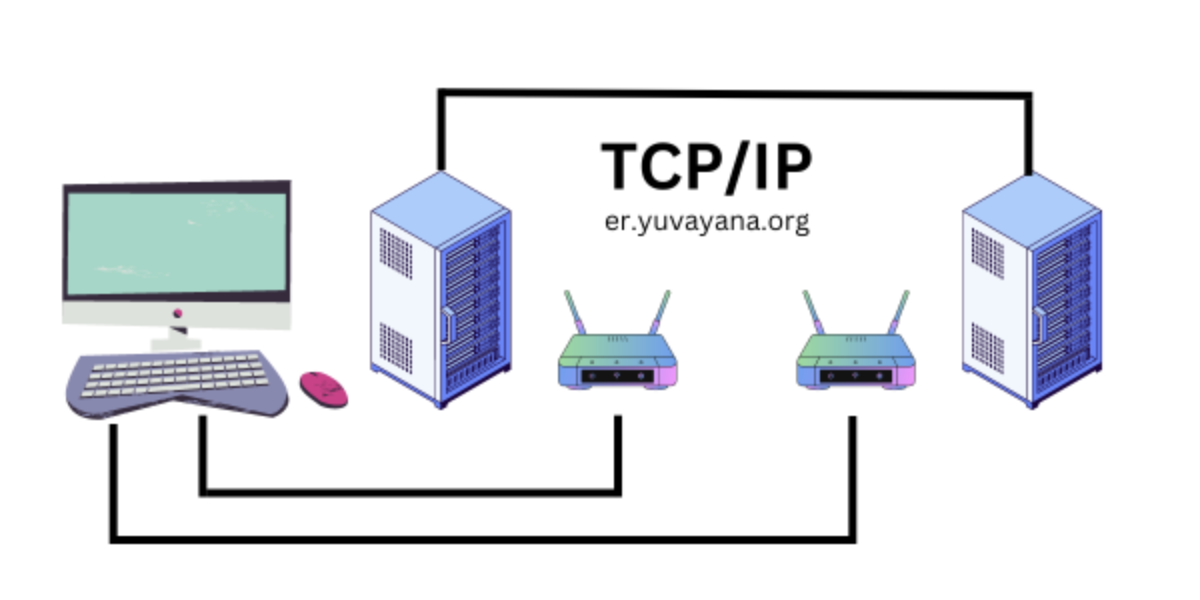
Let’s start with an overview of the OSI reference model. The OSI model has seven layers: application, presentation, session, transport, network, data link, and physical. Now, let’s compare these with the layers of the TCP/IP model, which has four layers: network access, internet, transport, and application.
The TCP/IP model was developed before the OSI model, and it combines the functionality of the physical and data link layers into a single layer called the network access layer. The internet layer in the TCP/IP model corresponds to the network layer in the OSI model. The transport layer in the TCP/IP model is the same as in the OSI model. Meanwhile, the session, presentation, and application layers from the OSI model are combined into a single application layer in the TCP/IP model. If you wanted to split the TCP/IP model into five layers, you could separate the network access layer into its physical and data link layers. Every layer in the TCP/IP model has its own set of protocols that define its functionality. For example, the network access layer uses protocols like PPP (Point-to-Point Protocol) and Ethernet. In the internet layer, we have IP (IPv4 and IPv6) and ICMP. The transport layer includes TCP and UDP, and in the application layer, we find protocols such as HTTP, DNS, DHCP, and FTP.
The TCP/IP model consists of four layers: the network access layer, which controls the hardware (including the physical layer); the internet layer, which is the network layer that determines the best path for data through the network; the transport layer, which handles communication between devices across different networks and is responsible for process-to-process communication; and the application layer, which interacts directly with the user, handling data presentation, encoding, and dialogue control.
In terms of the protocols used, the network access layer includes protocols like PPP, Ethernet, and other interface drivers. In the internet layer, we use routing protocols such as RIP, OSPF, EIGRP, and BGP, along with IP support protocols like ICMP and NAT. The transport layer relies on TCP and UDP for data transmission. The application layer includes protocols like DNS (Domain Name System), DHCP (Dynamic Host Configuration Protocol), SMTP (Simple Mail Transfer Protocol), IMAP (Internet Message Access Protocol), FTP (File Transfer Protocol), and HTTP (HyperText Transfer Protocol).
In the TCP/IP protocol suite, each layer has a corresponding Protocol Data Unit (PDU). The PDU in the application layer is called data. When data is passed to the transport layer, it becomes a segment. The network layer adds its header to the segment, turning it into a packet. The data link layer then adds both a header and a trailer to the packet, which becomes a frame. Finally, the physical layer converts this frame into bits, which are transmitted as 0s and 1s.
For example, if a user is accessing a mail server (like Gmail), the user’s request begins as application data. If the data is too large, it’s broken into smaller pieces, each with a transport header, creating a segment. When a network header is added, the segment turns into a packet. Then, the packet is encapsulated with a header and trailer in the data link layer, turning it into a frame. Depending on whether the data is transmitted over Ethernet or Wi-Fi, the frame will differ because it’s medium-dependent. Finally, the data link layer’s frame is turned into bits for transmission by the physical layer.
To summarize, each layer in the TCP/IP model adds a specific header or trailer to the data, which gets progressively encapsulated as it moves through the layers, from data in the application layer to bits in the physical layer.













